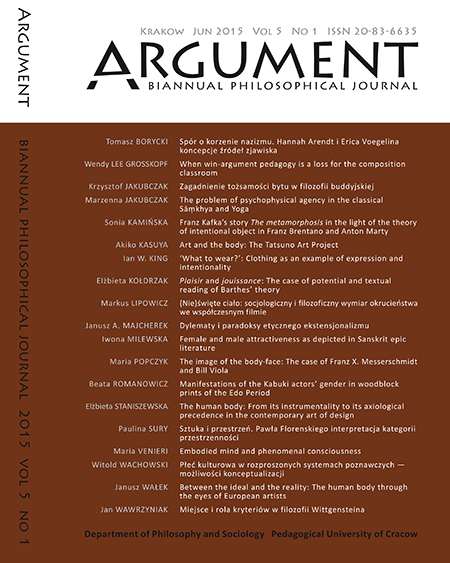(Nie)święte ciało – socjologiczny i filozoficzny wymiar okrucieństwa we współczesnym filmie
Keywords:
cruelty, violence, body, objectification, society, cinema, mediaAbstract
(Un)holy body - the sociological and philosophical dimensions of cruelty in contemporary film: The aim of the present article is an attempt to analyse and interpret cinematic cruelty from a sociological and philosophical perspective. Contrary to the received wisdom, where film violence results on the viewers’ side from the destructive aspects of human nature and on the producers’ side from the desire for material profit, the author presents an alternative approach to this social phenomenon. The main thesis is that gore in movies poses a more or less fulfilling artistic commentary on actual social relationships and contemporary cultural conditions. The line of the argument is divided into three parts: in the first part, the author describes the modern transition from a transcendental to a transgressive understanding of the body and of corporeality; in the second part, the author presents the issue of cultural fascination with cruelty, from a sociological and also from a historical perspective; in the third and last part, the author analyses and interprets the respective aspects of three selected violent movies, pointing out their sociological and philosophical implications. The main methodological premise is posed by the concept of the ‘productive viewer’ from Rainer Winter, according to which the viewer is not a passive perceiver of art, but is an active and interpretive subject of the pictures on the basis of their contemporary cultural meanings and content.


